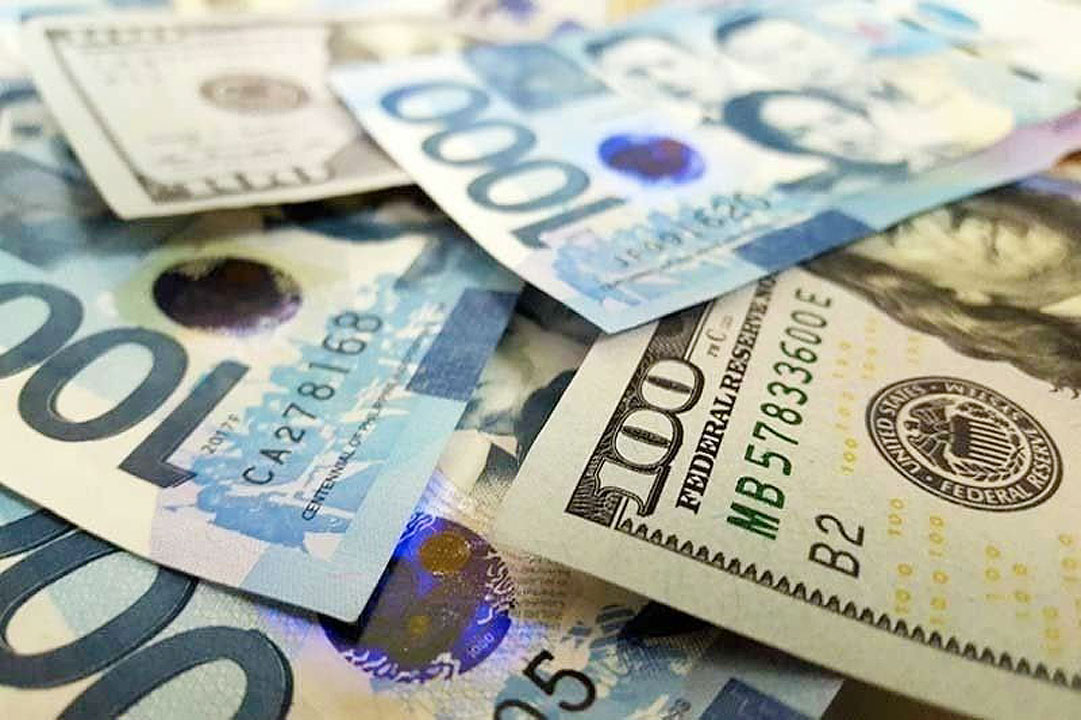Peso may rise further as gov’t shutdown weighs on US dollar

THE PESO may rise further against the dollar this week as the US government’s operations remain halted, resulting in market uncertainty.
On Friday, the local unit closed at P57.875 per dollar, jumping by 20.5 centavos from its P58.08 finish on Thursday, data from the Bankers Association of the Philippines showed.
Week on week, the peso also rose by 22.5 centavos from its P58.10 close on Sept. 26.
“The US dollar/peso exchange rate corrected slightly lower for the third straight trading day after the latest US government shutdown starting Oct. 1 led to a net decline in the gauge of the US dollar to among one-week lows,” Rizal Commercial Banking Corp. Chief Economist Michael L. Ricafort said in a Viber message.
“The dollar-peso closed lower, still as the US government shutdown weighed on the dollar,” a trader said by phone on Friday.
For this week, the trader said the market will await developments in the US, with the dollar likely to continue its descent if there is no progress over the weekend.
The trader sees the peso ranging from P57.60 to P58 per dollar this week, while Mr. Ricafort expects it to move between P57.65 and P58.15.
A bid to end the government shutdown failed again in the Senate on Friday, Reuters reported. On the shutdown’s third day, US President Donald J. Trump ramped up pressure on Democrats to end the standoff and agree to a Republican plan that would restore government funding. But that failed in a 54-44 Senate vote, short of the chamber’s 60-vote standard, ensuring that the shutdown will last until at least Monday.
The dollar retreated on Friday, posting multi-week losses against major currencies, as uncertainty surrounding a US government shutdown clouded the outlook and delayed key data releases, such as payrolls, critical for gauging the economy’s direction.
The US nonfarm payrolls report for September was due for release on Friday, but was not published due to the government closure.
In late afternoon trading, the euro rose 0.2% against the dollar to $1.1743, headed for its best week in a month.
Gains in the euro pushed the dollar index, which measures the greenback against a basket of key currencies, 0.1% lower at 97.69. The index had its worst weekly showing since July.
“If the shutdown lasts for a long time, and I mean by several weeks, yes, then, of course, people will begin to question governability in the US,” said Thierry Wizman, global FX and rates strategist, at Macquarie in New York.
“And anytime that the market starts to worry about governability in that country, it usually is not a good story for the currency.”
The US currency slightly extended its fall against major currencies after data showed US services sector activity stalled in September amid a sharp slowdown in new orders.
The Institute for Supply Management said its non-manufacturing purchasing managers’ index (PMI) fell to 50 last month, the breakeven level between growth and contraction, from 52.0 in August. Economists polled by Reuters had forecast the services PMI easing to 51.7.
Traders see a 25-basis-point (bp) cut at the Federal Reserve’s October meeting as almost certain. Overall, the rate futures market has priced in about 47 bps of rate declines for the remainder of the year or just under two cuts, according to LSEG calculations.
Fed Governor Stephen Miran on Friday again pressed for an aggressive path of rate cuts given big changes in the economy, while saying that the difference between his outlook and that of his central bank colleagues is not as great as some perceive it to be. Mr. Miran dissented in favor of a 50-bp rate cut at the Fed’s policy-setting meeting last month.
Last week provided more evidence of sluggishness in the labor market, and more ammunition for the Fed to cut rates later this month. The ADP National Employment report on Wednesday showed private payrolls decreased by 32,000 in September.
Dallas Fed President Lorie Logan on Friday, however, repeated her view that upside inflation risks, a labor market that is largely in balance and policy that is currently only modestly restrictive mean the central bank should not go ahead with further interest rate cuts. — A.M.C. Sy with Reuters



